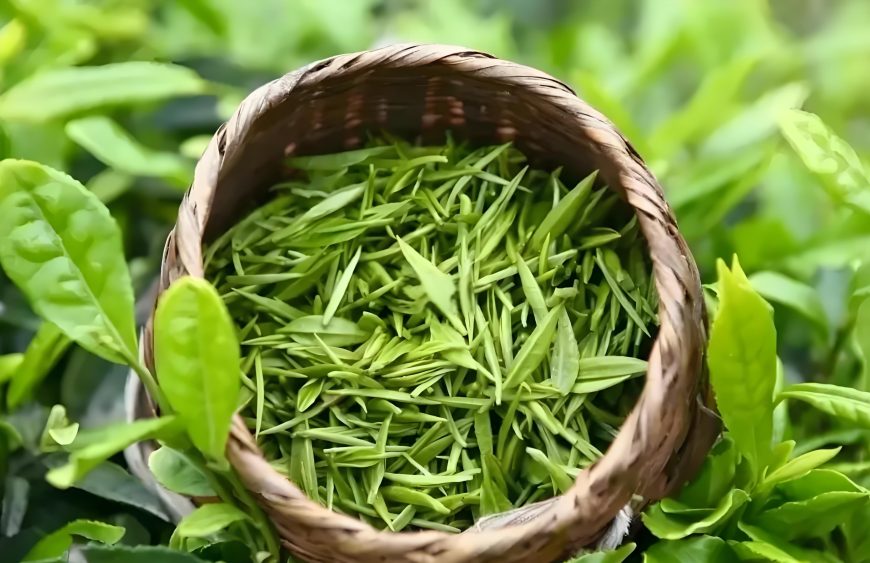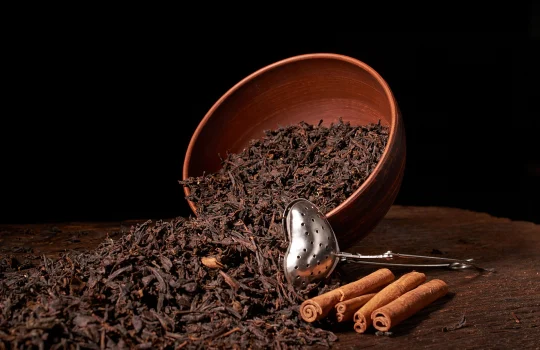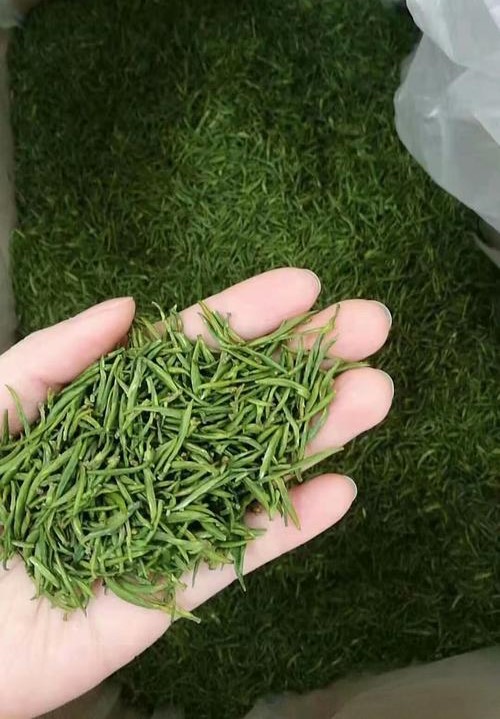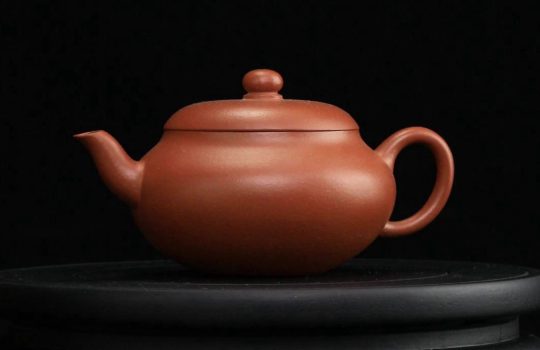Kaicheng Longding Origin: Kaicheng, Zhejiang
Quality Characteristics: Dry tea: Compact, straight, and elegant in shape, with a silver-green hue and visible white downy hairs, the buds and leaves form clusters.
Tea liquor: Apricot-green in colour, clear and bright.
Aroma: Fresh, crisp, and refreshing, with a rich and持久 fragrance, featuring a subtle grassy note. It can be categorised into orchid and chestnut aromas, with orchid being the superior variety.
Taste: Fresh, crisp, and full-bodied, with a sweet aftertaste.
Leaf Base: The leaf base is uniform and tender, forming clusters, earning it the reputation of ‘Underwater Forest’ and ‘Golden Spears Standing Tall.’
Detailed Introduction to Kaihua Longding
Kaihua Longding, abbreviated as Longding, is produced in Kaihua County, which is part of the ‘Golden Mountain Corner’ region renowned for green tea production. The tea-growing area features mountains resembling camel humps and rivers flowing like jade dragons. The area is characterised by ‘sunny days shrouded in mist and cloudy days enveloped in clouds,’ with ‘orchids blooming everywhere and mist and clouds providing year-round moisture.’ This exceptional natural environment has nurtured the solitary, fragrant Kaihua Longding tea plants nestled deep within the clouds. Kaihua Longding is renowned for its ‘three greens’ characteristics: green dry leaves, clear green tea liquor, and fresh green leaf base. It is a visually stunning and high-quality green tea, a true masterpiece from the source of the Qiantang River. It was designated as an imperial tribute tea as early as the fourth year of the Chongzhen reign of the Ming Dynasty (1631).
Tasting Notes for Kaihua Longding
Longding tea is fresh, mellow, and rich in flavour, with a crisp and refreshing taste. It glides smoothly down the throat, leaving a sweet and lingering aftertaste. It stimulates saliva production and leaves a lingering aroma between the teeth. Even after three infusions, it retains its charm.
Shape description of Kaihua Longding
Kaihua Longding belongs to the high-mountain mist tea category. Its appearance is tight, straight, and elegant. It has a distinct green aroma, with buds and leaves forming clusters, making it very beautiful. ‘Dry tea is green, the tea liquor is clear green, and the tea leaves are fresh green’—these three greens are the main characteristics of Longding tea. When high-quality Longding tea is brewed with boiling water, the bud tips slowly sink from the water surface to the bottom of the cup, and the tiny buds gradually unfurl. The green leaves cradle the tender buds, standing upright in the cup, vivid and lifelike, truly a sight to behold. Lower-quality Longding tea lacks the aesthetic appeal of upright buds. Longding tea is divided into spring, summer, and autumn teas, with spring and autumn teas generally being of higher quality. Kaihua Longding tea has a relatively mild flavour, and the taste becomes weaker after three or four infusions.
Storage methods for Kaihua Longding tea
Dry storage technology is the prerequisite for extending the shelf life and freshness of Kaihua Longding tea, as well as for applying other preservation techniques. Select containers such as iron boxes, glass bottles, rice jars, or ceramic jars that are appropriately sized and have good sealing properties. The size should be determined based on the amount of tea being stored, and the containers must be dry, clean, odourless, and rust-free. Wrap the dried Kaihua Longding tea in clean, thin paper (do not use old newspapers, to prevent the leaves from absorbing ink odours), each weighing 0.5 kilograms, then tie them tightly with a thin rope and layer them around the sides of the container (with lime placed in the centre), then seal it. Lime that has absorbed moisture and weathered should be replaced promptly, generally every 1-2 months. This method is highly effective for storing Kaihua Longding tea. Lime can also be replaced with silica gel, which can be dried and reused. When silica gel absorbs water and changes colour, it also works well.
The benefits of Kaihua Longding tea
Kaihua Longding tea has a unique flavour, containing abundant tannins, aromatic oils, and vitamins. It not only has a refreshing aroma and invigorating effect but also possesses benefits such as promoting saliva production, quenching thirst, antibacterial and anti-inflammatory properties, clearing heat and detoxifying, and preventing gastrointestinal infections. Locals drink Kaihua Longding tea as a daily health beverage to strengthen teeth, prevent cavities, aid digestion, and sober up. They also use its tea water to wash sores and scars, with good therapeutic effects.
The story and origin of Kaihua Longding
Kaihua Longding Tea originated near Longding Pond at an altitude of 800 metres. Legend has it that the pond was originally a dry, waterless basin. One year, a enlightened monk travelled to this area and discovered that the surrounding area was filled with ancient trees, mist-filled skies, and dense shade, making it an ideal place for spiritual cultivation. He built a stone house by the pond and lived there, personally cleaning the pond every day, deciding to cultivate his spiritual practice there. The monk used an iron hoe to clear the pond for countless days and nights. One day, when the iron hoe touched the bottom of the pond, he uncovered a green stone shaped like a millstone. As the stone was lifted, a water column erupted from the pond, shooting into the heavens. Among the water droplets, a green dragon appeared, circling the pond three times before soaring towards the East Sea. From then on, the once-dry pond flowed with spring water year-round, never drying up even during severe droughts. It irrigated the fertile fields below the mountain and nourished the surrounding forests. The pond was thus named ‘Dragon’s Peak Pond.’ The monk planted tea trees around Longding Pool. The tender grass on the mountain and the fertile soil in the forest provided ideal conditions for tea cultivation, which expanded year after year. Additionally, the high humidity of the streams and the short sunlight in the valleys allowed the tea trees to thrive in a misty, cloud-filled environment, surrounded by the fragrance of flowers, resulting in exceptional tea quality. Since the tea trees were planted around Longding Pool, the tea was named Longding Tea.




